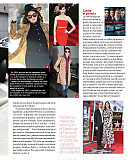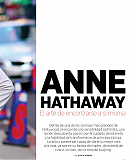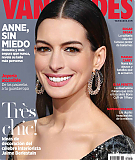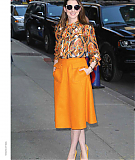“Rachel Getting Married” began life when director Sidney Lumet’s daughter, Jenny, imagined a young bride looking at herself in a three-way mirror. Then her sister bursts into the room, and the moment is either enhanced or — destroyed.Or perhaps a little of both.
As realized by director Jonathan Demme, “Rachel Getting Married,” which opens Friday, captures life in all of its messiness, juxtaposing a gorgeous wedding against a family confronting both a past tragedy and the present neediness (or is it selfishness — or perhaps unrecognized heroism?) of a daughter returning from rehab. The conflicts between the family members — the (by turns, blushing and bitter) bride, Rachel (Rosemarie DeWitt); the self-absorbed sister (Anne Hathaway); the overcompensating father (Bill Irwin); the emotionally closed-off mother (Debra Winger) — are so finely drawn that your sympathies usually lie with whoever spoke last. “Everyone’s always right, and no one’s totally wrong,” says Hathaway, whose turn as the troubled Kym won raves at film festivals in Toronto and Venice. “That’s what I love about this movie so much. But it would be frustrating to be a member of that family. It’d be a tall order.”
Adds DeWitt: “Everyone is doing the best they can, which isn’t necessarily good enough for the other members of the family, but it really, truly, is the best.”
Demme read Lumet’s screenplay as a favor to her father, found himself intrigued and eventually set upon making what he called “the most beautiful home movie ever made.” He wanted the film to have the feel of a documentary that puts the audience in the center of the family’s joy and tumult.
To that end, Demme and his director of photography, Declan Quinn, shot long, 12- to 14-minute takes using handheld cameras. For big group scenes, like at the rehearsal dinner or the wedding, Demme had four or five cameras going at once. The actors remained in character, assuming, Hathaway says, that there was a hidden camera rolling somewhere.
The film’s unrehearsed style extended to its use of music. Demme had long wanted to “provide the musical dimension of a movie without traditionally scored music.” And as it turned out, Rachel is getting married to a music producer. And Rachel’s father is a music industry bigwig.
Demme reasoned that the wedding weekend — taking place at the family home — would be a congregation of musicians playing more or less nonstop for 72 hours. He enlisted friends — New Orleans-born jazz saxophonist Donald Harrison and Palestinian violin virtuoso Zafer Tawil — to compose the score and play it on the spot while Demme shot the movie.
“He wanted the actors to hear it at the same time the audience was hearing it,” Lumet says. “I would assume it would make it hell in the editing room, but that’s what Jonathan wanted. And, not to sound like a Pollyanna, but it really illuminated the script. The music became a character and made the movie better.”
Certainly, it seeped in to the actors’ performances in ways both subtle and, in one case, obvious. While shooting an intimate family conversation/confrontation (the two usually go hand-in-hand with this group) around the kitchen table, Hathaway found it difficult to concentrate because of the music.
“I was really distracted,” Hathaway says. “And I really loved the scene. So I wanted to find out if I could just do a take to get a feel for it and then if Jonathan wanted the musicians to come back for a later take, I’d be fine with that.”
The message was relayed to Demme. His reaction?
“Jonathan said, ‘If Annie’s unhappy, let her do something about it,’ ” Hathaway remembers. “I’m like, ‘All right, J.D., them’s fightin’ words.’ ”
On the next take, Hathaway begins the conversation, gets irritated and then, on the fly, asks Bill Irwin, playing her father, if the musicians are going to play “all (bleeping) weekend.” Irwin and Anne Deavere get up and shush the players.
“That was awesome,” DeWitt says. “The one time the music threw us, it got incorporated into the movie.”
Those kinds of happy accidents fill “Rachel Getting Married,” a movie made with what Demme calls an “aggressively collaborative” process” or, as producer Neda Armian puts it: “It was organized chaos.”
Armian would know. During the 33-day shoot, she describes her job less as a producer than as a “wedding planner” or “hostess,” charged with giving special attention to the dozens of people — most of them Demme’s friends — serving as guests at the wedding’s rehearsal dinner and ceremony.
Armian would introduce people, remind them how they knew each other, get them to connect and step out of the way.
“Jonathan wanted to create an environment, a vibe that would make the movie an emotional experience,” Armian says. “When you see people linking up and dancing, that was not directed. They were genuinely doing that. And I think that helps people connect with the movie.
“Your gut tells you it’s truthful. It’s real.”
Adds DeWitt: “I think the universal truths about family are there. Maybe not everyone’s friends are as hip as Jonathan’s. But we can dream, can’t we?”
Source: Mercury News






































Comments are closed.